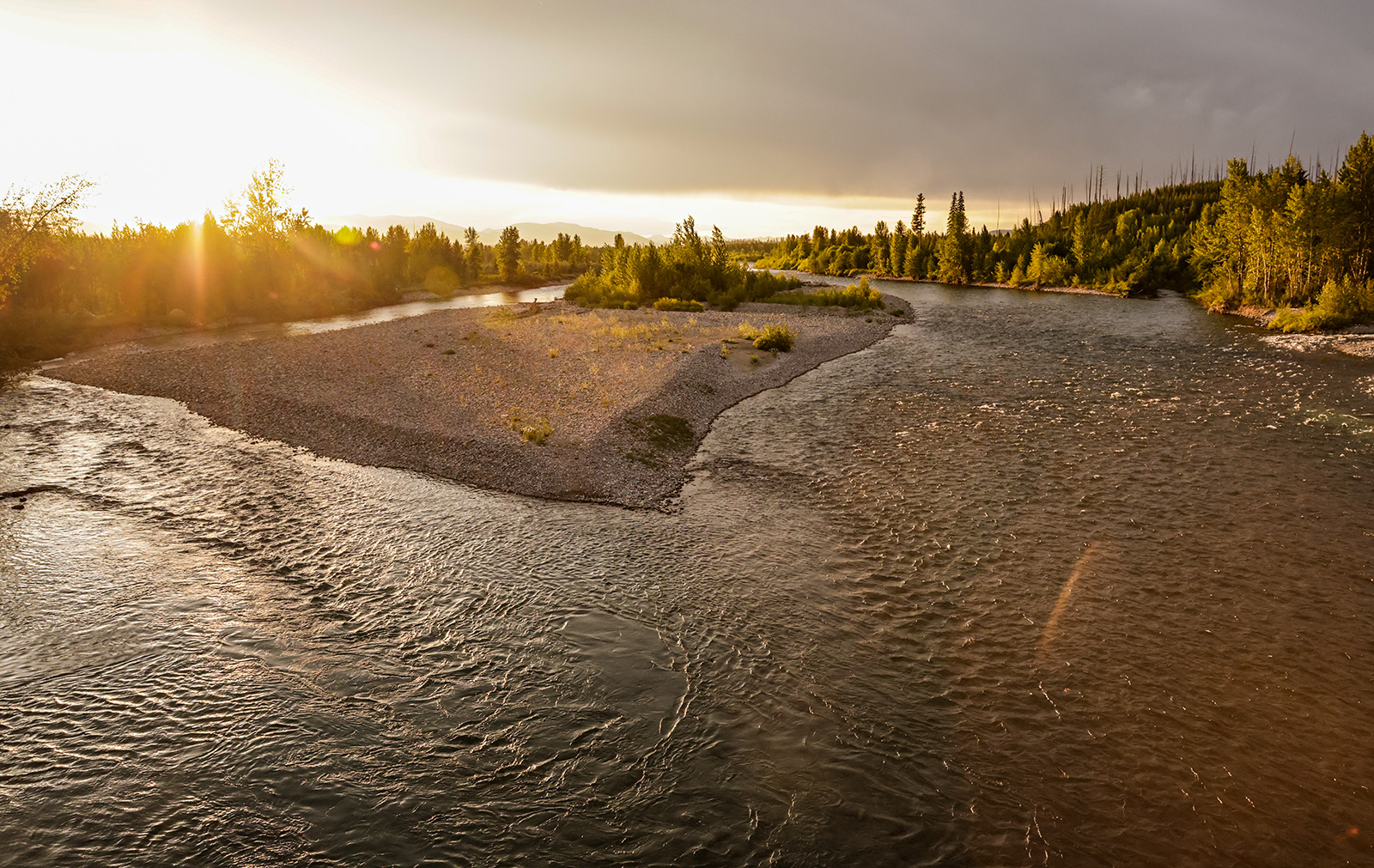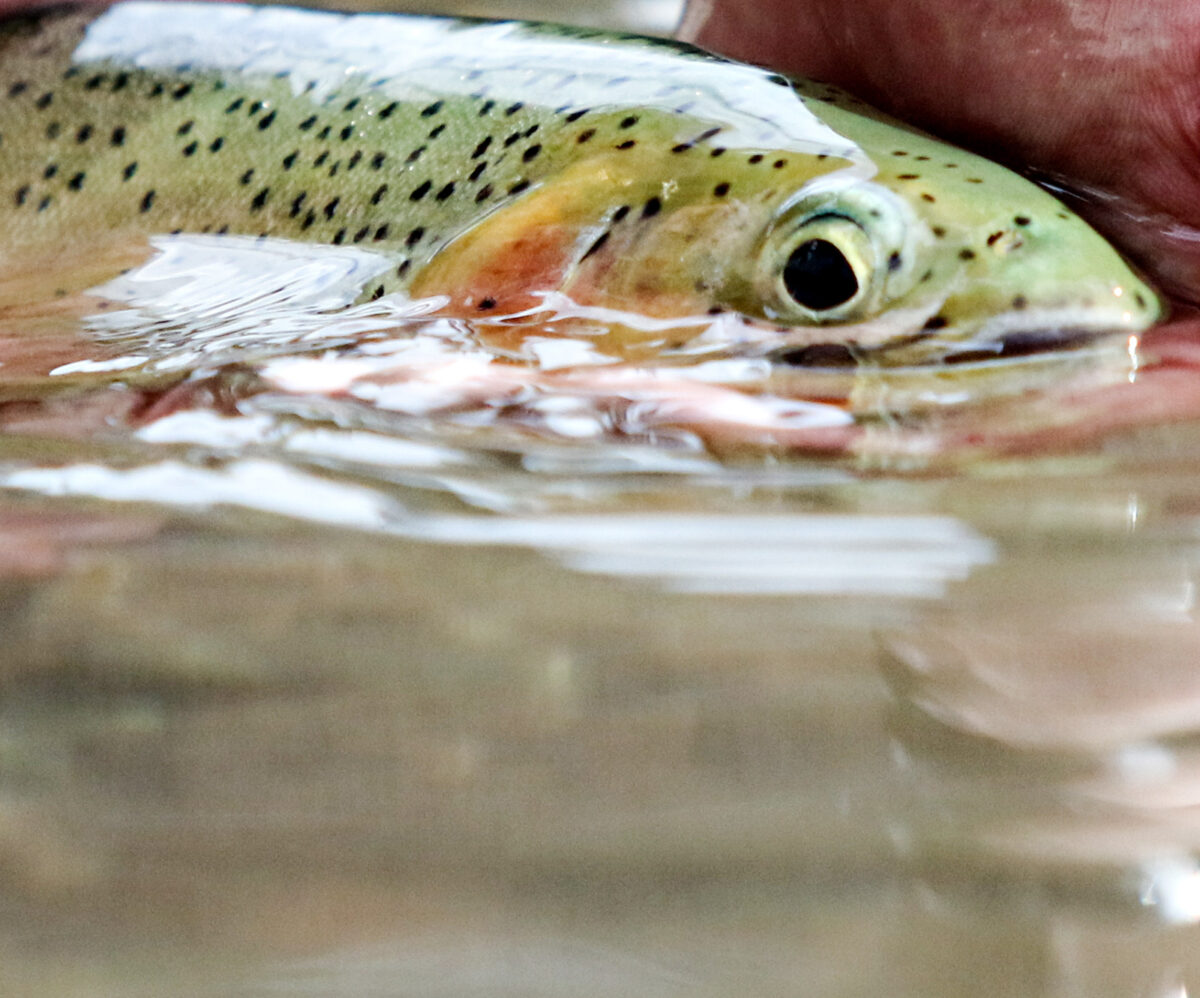Amid Record-breaking Stream Temperatures, FWP Enacts Unprecedented Angling Restrictions on North Fork Flathead River
The restrictions, which begin Wednesday, prohibit fishing from 2 p.m. to midnight and will remain in effect until conditions improve; fisheries managers have never before imposed “hoot owl” restriction on the Flathead River system
By Tristan Scott
As water temperatures shatter records in rivers and streams across the region, state fisheries managers in northwest Montana on Tuesday announced they are taking the unprecedented step of imposing angling restrictions on the North Fork Flathead River along the western border of Glacier National Park.
Biologists with Montana Fish, Wildlife and Parks (FWP) have been closely monitoring the water temperatures of local rivers and streams amid a summer heat wave in northwest Montana, where water temperatures in the North Fork have been near or above daily records since early July.
By midafternoon on Tuesday, U.S. Geological Survey stream gages on the North Fork near Glacier Rim Fishing Access Site had already registered a record-high daily temperature of 66.92 degrees Fahrenheit, marking the third consecutive day that water temperatures have exceeded a 66-degree threshold that biologists say is stressful to native westslope cutthroat trout. By 5 p.m., the temperatures had hit 67.82 degrees Fahrenheit.
“We have been at or above record daily water temperatures on the North Fork pretty consistently since July 10,” according to Dillon Tabish, the public information officer for FWP in Region 1.
With the 45-day forecast predicting little relief from the heat, and as diminishing stream flows exacerbate the conditions across the region, fisheries managers said they had little choice but to enact the restrictions. On the North Fork Flathead River, the angling restrictions will begin at 2 p.m., Wednesday, July 24. The hoot-owl restrictions prohibit fishing from 2 p.m. to midnight each day. The restriction will remain in effect until conditions improve.
FWP’s Statewide Fisheries Management Plan identifies temperature criteria for westslope cutthroat trout, triggering restrictions when water temperatures reach or exceed 66 degrees Fahrenheit for three consecutive days. The criteria for bull trout on the South Fork Flathead River, which is the only river in which FWP manages a catch-and-release fishery for bull trout, is 60 degrees, also for three consecutive days.
“We don’t want to close the fishery, and for much of the day we have water temperatures that are below the threshold for westslope cutthroat trout,” said Kenny Breidinger, a fisheries biologist with FWP. “For anglers who adhere to good catch-and-release practices, and who keep their trout wet and don’t handle them excessively, they’ll hopefully have minimal impact on those fish if they follow the restrictions. But given the long-term forecasts, we expect to be exceeding these temperature thresholds into August.”
Similar to last summer, Breidinger said the Flathead River basin is experiencing low flows and increasing water temperatures due to below-average winter snowpack, early runoff and hot, dry summer conditions. Flows in the North, South, and Middle forks of the Flathead River are below average for this time of year, while water temperatures have consistently been hitting stressful levels for trout, particularly native species like westslope cutthroat and bull trout.
Last week, FWP biologists urged anglers in northwest Montana to voluntarily limit their fishing to the morning hours, when the water is coolest and the region’s native cold-water species are less stressed; however, they stopped short of enacting mandatory restrictions.
Already this summer, FWP has enacted “hoot owl” fishing restrictions on more than a dozen rivers in western Montana, including parts of the Beaverhead, Big Hole, Bitterroot, Blackfoot, Clark Fork, Gallatin, Jefferson, Lower Madison, Silver Bow, Smith, and Sun rivers. On Tuesday, FWP enacted full fishing closures on some tributaries of the Clark Fork River.
“It is common for FWP to implement hoot-owl fishing restrictions in sections of rivers across the state every summer. However, it is uncommon for FWP to enact restrictions in northwest Montana,” according to the agency’s press release announcing the North Fork restrictions.
FWP has never implemented hoot owl restrictions in the Flathead drainage until now, and only once has it imposed mandatory restrictions on the Thompson River, Tabish said.
The Flathead watershed has historically avoided hoot owl restrictions due to its geography and geology; not only are the rivers fed by higher-elevation tributaries that come out of the mountains and stay cold even at lower flows, but they’re also more influenced by the groundwater.
On Tuesday, the state management agency received approval from the Montana Fish and Wildlife Commission and collaborated with Glacier National Park on the restriction, which will extend along the full length and both sides of the North Fork from the U.S.-Canada border to the confluence with the Middle Fork Flathead River near Blankenship Bridge.
“It’s an unfortunate pattern we’re seeing,” Tabish said. “And unfortunately, it’s going to be difficult to manage expectations for our anglers. We can’t predict when those restrictions might get lifted, or whether they might be expanded to include the other rivers that we are monitoring. We might get some relief from the heat in mid-August but the forecast sure doesn’t paint a promising picture.”
Fishing restrictions are designed to protect fish that become more susceptible to disease and mortality when conditions, such as low flows and high water temperatures, combine with other stressors, including catch-and-release fishing, Tabish and Breidinger said.

Fisheries biologists also remain concerned about increasing water temperatures and affected trout populations in the following rivers and adjacent tributaries:
- Middle Fork Flathead River
- South Fork Flathead River
- Main stem Flathead River upstream of Old Steel Bridge in Evergreen
- Swan River
- Thompson River
“FWP is not recommending hoot-owl restrictions at this time on these other stretches of water but is encouraging anglers to voluntarily limit their fishing to the morning hours when water is coolest and fish are less stressed,” according to agency officials. “Additional fish stress and mortality can result from human handling when trout are caught and released by anglers.”
FWP will continue to monitor conditions on these rivers and make adjustments as needed.
For a list of statewide restrictions and closures, visit https://fwp.mt.gov/news/current-closures-restrictions.